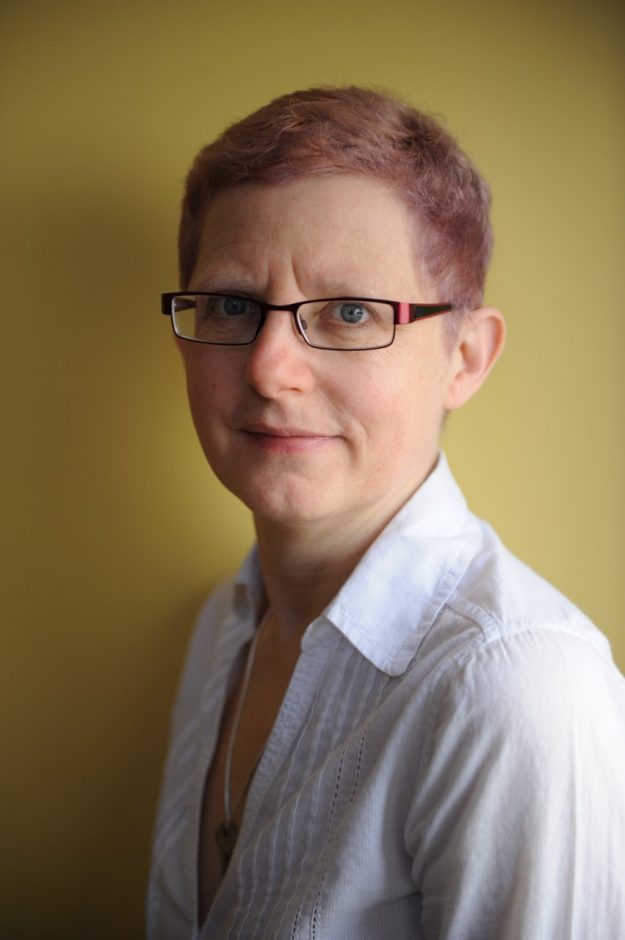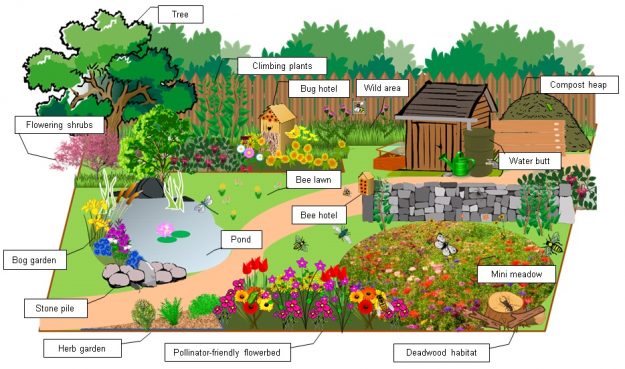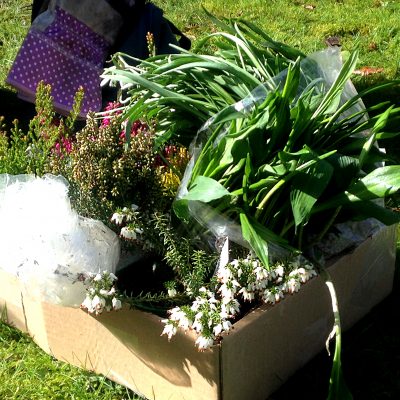Can a small patch of flowers really make an impact?
Right now there is a desperate need to provide food and habitat for bees and other pollinators whose numbers are dwindling. Not just for their sake, but ours as well.
The sun is shining for maybe the first time in months. Outside the Bute Building in Cardiff, a group of volunteers in their wellies stand with rakes and shovels at the ready around a few boxes of flowers and an even patch of dirt.
They are Bute Bees and they are here to help insects, namely pollinators, by providing habitats and plants they need to survive. The grass that used to carpet the rectangles they’ve unearthed couldn’t provide that.
“It’s nice to make it a bit more colourful, and to get people talking about why the bees should be here and what attracts the bees because they’re in decline at the moment,” says Bute Bees volunteer Dominique Behn.
What’s the Problem Here?
The shrinking number of bees has been so severe over the years that two species have gone extinct since the start of the 21st century. It’s not just bees to worry about, pollinators in general are crucial to plant reproduction. Without plants, there isn’t much, or anything, to sustain animals… and that includes people.
“If bumblebee and other insect pollinator declines continue, the extremely high cost of pollinating these plants by other means could significantly increase the cost of fruit and vegetables,” states the Bumblebee Conservation Trust on their website.

One way people are tackling the issue is to create habitats for the pollinators. This is what the volunteers at Bute are doing with support from Urban Buzz, a project of Buglife.
Buglife is an invertebrate conservation charity. They provided the plants that were placed in rows outside Bute Building. The charity is focused on maintaining sustainable populations of bugs. They are the only charity in Europe that target a wide range of insects.
“It’s a U.K. wide project running across eight different cities,” says Michelle Bales, Buglife’s conservation officer in Cardiff. “The goal is to increase pollinator habitats in urban environments.”
“A lot of people don’t realize that the majority of bees are solitary and actually don’t live in hives,” Bales says, “You actually have to provide things like hollowed stems, holes in walls, and places where they can burrow underground.”
What causes bee population decline? In part, war and pesticides.
While there are many factors that have led to this crisis, part of the problem began when Great Britain instituted local food initiatives to feed the UK’s population during WWII.

“In the Second World War we had to grow food crops,” says Justine Jenkins, the research and engagement manager of the School of Pharmacy and Pharmaceutical Sciences at Cardiff University.
“Basically, all the lovely hay meadows were destroyed. We went over to a single grass species, which was rye grass which is not a UK species. It was imported from America.
“It’s a really prolific plant so it just took out all of the natural species so your diversity just went completely. That’s what the big problem is: it’s lack of diversity.”
Another issue is the use of pesticides, or really the neonicotinoids that are in them.
In a study done by Penelope R. Whitehorn and others in 2012, scientists found trace amounts of the neonicotinoid chemical in “the pollen and nectar of treated of crop plants.” They discovered an 85 percent reduction in new queens of bee colonies in colonies treated with the substance.
What Is Being Done About It?
It’s not just Buglife taking up the initiative. The Welsh government is on the move as well to provide spaces for pollinators to thrive, part of the Wales Biodiversity Partnership that includes projects like Polli:Nation.
Cardiff University’s School of Pharmacy and Pharmaceutical Sciences has a hand in bee-keeping activities as well. A PhD study that kicked off a series of actions that have led to Pharmabees, and various initiatives to improve the habitats of pollinators in the Welsh capital.
“It was a project that started off very simple and has just gone insane,” Jenkins says. “It’s fantastic.”
These programmes span from a green roof project currently underway, beehives on the school’s roof, and planting a diversity of pollinator-friendly plants around the campus.
Getting these types of projects up and running takes a groundswell of support. Which in many ways has been the case in Cardiff, where it’s been growing. Community involvement makes it possible, aside from funding and planting guidelines, that is. Building bridges across a fragmented natural landscape takes many people in many places.
What Can You Do About It?

“Plant plants. Put the plants in, give them something to feed on, give them habitat. That’s what’s lacking,” Jenkins says.
“We’ve got so many green areas in the city. What’s the point of grass? Really, what is the point of grass?”
If you feel inclined to do some planting yourself this spring, Bales says to go with local plants: “It’s always better to go native. It’s what’s meant to be here. The habitats, the weather, the ecology… they go hand in hand.”


